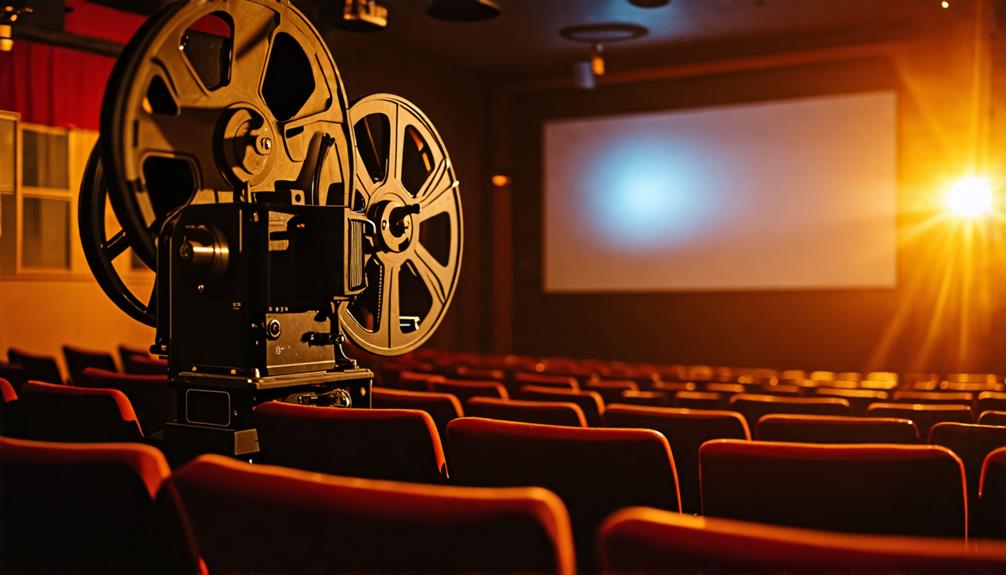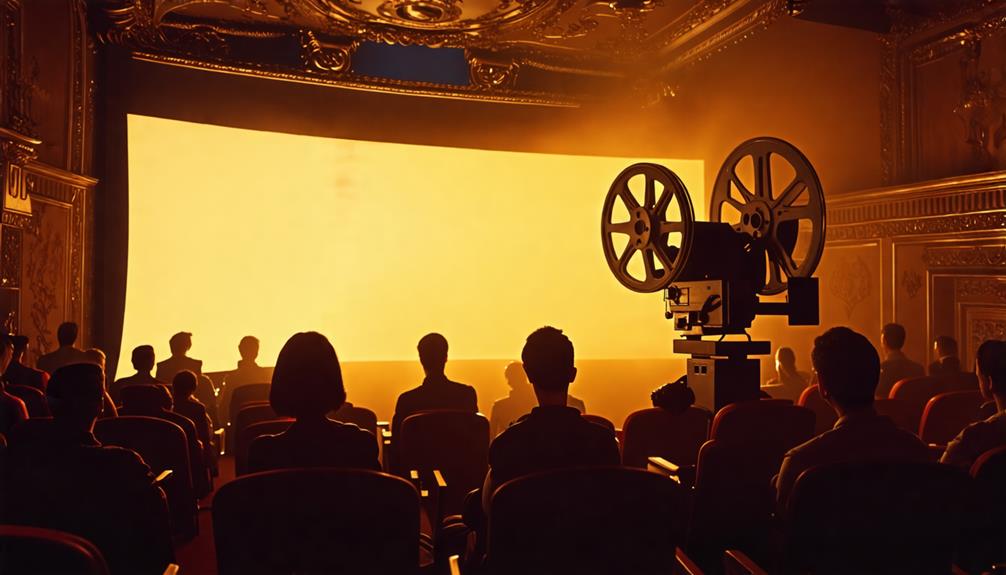You've probably never questioned why movie previews are called "trailers," but the answer might surprise you. It's a linguistic remnant from cinema's early days when these promotional clips actually trailed behind the main feature. This practice, which seems counterintuitive today, was the norm in the early 20th century. However, as you can imagine, it didn't take long for theater owners and studios to realize this wasn't the most effective marketing strategy. The evolution of this practice reveals fascinating insights into the history of film promotion and audience behavior. But there's more to this story than meets the eye.
Key Takeaways
- Movie trailers got their name from being shown after feature films in early cinema.
- The term "trailer" originated before the 1930s when previews followed the main attraction.
- Audience departures after films prompted a shift to showing trailers before features.
- Despite the change in placement, the name "trailer" stuck due to industry familiarity.
The Origin of Movie Trailers

Movie trailers have a fascinating history that dates back over a century, with their name originating from an unexpected practice. In the early days of cinema, these promotional films were shown after the feature film, literally 'trailing' behind it. This placement is why we still call them trailers today, even though they're now shown before movies.
The first recorded trailer appeared in 1913, created by Nils Granlund to promote a Broadway play. As the film industry grew, trailers evolved into a powerful marketing tool.
Initially used to engage audiences during intermissions, they soon became a standard part of the movie-going experience. In the 1930s, theaters began showing trailers before the main feature to capture audience attention more effectively.
The National Screen Service played a vital role in standardizing trailer production and distribution, shaping the history of this unique promotional format.
From Back to Front
The journey of trailers from post-feature afterthoughts to pre-movie marketing powerhouses marks a fascinating shift in cinematic history. You might be surprised to learn that trailers once followed the main feature, earning their name by 'trailing' the film. But in the 1930s, movie theaters noticed audiences leaving after the main feature, missing these promotional clips. This prompted a strategic change, moving trailers to the beginning of the show.
| Era | Trailer Placement | Audience Behavior |
|---|---|---|
| Pre-1930s | After main feature | Many left early |
| Post-1930s | Before main feature | Increased engagement |
| Modern | Multiple platforms | Varied consumption |
Despite this shift, the term 'trailer' stuck, becoming an integral part of film marketing vocabulary. The National Association of Theater Owners and film studios embraced this change, recognizing trailers' potential to hook audiences and boost ticket sales. Today, previews remain an essential promotional tool in cinematic history.
Evolution of Film Marketing

From humble beginnings to sophisticated strategies, film marketing has undergone a remarkable transformation over the past century. The evolution of trailers, initially created to promote Broadway plays, marks the inception of modern film marketing techniques.
You'll find that audience engagement has been a key driver in this evolution, prompting the shift from showing trailers after films to before them in the 1930s. The National Screen Service played an essential role in standardizing promotional films for over four decades.
However, the rise of the summer blockbuster in the 1970s revolutionized the approach, with customized trailers designed to maximize pre-release hype. Today, movie previews have expanded their reach through digital platforms, incorporating advanced marketing techniques to build anticipation.
This evolution reflects the industry's ongoing adaptation to changing viewer habits and technological advancements, ensuring that trailers remain a powerful tool in film promotion.
Conclusion
You've learned the quirky history behind movie trailers.
Despite their name, they've come a long way from trailing at the end of films.
Today, you'll find them front and center, building anticipation for upcoming releases.
As film marketing has evolved, so too have trailers, becoming an art form in themselves.
Next time you're at the movies, you'll appreciate these bite-sized previews with a newfound understanding of their journey from back to front.

Leave a Reply